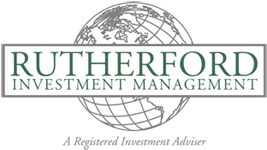
After rolling through Labor Day, we continue to have high unemployment. It’s at 9.1 percent, and even President Obama says it will remain high through 2012. If so, Republicans are salivating over the opportunity to retire the president after only one term.
The pundits already are expecting Republicans to gain enough seats to take control of the Senate. Because of Democrats’ large victory in 2006, they have about twice as many seats to defend as Republicans. This gives the Republicans a big advantage going into the elections, so it is their election to lose.
As if high unemployment wasn’t enough bad news, housing starts have been moribund, the Philly Fed index fell to its lowest level since March 2009 – the recent market bottom. The consumer confidence index tumbled as well, to its lowest level since April 2009; the drop was far bigger than anticipated. As the global economy slows, and fears of the European debt crisis continue, worries over another
recession have put a damper on the markets. According to David Kelly, chief market strategist at JP
Morgan Funds, “… the market is an engine flooded with liquidity but without a spark.”
Economic growth is surely slowing not only in the U.S. but globally as well. Economic forecasters are
expecting GDP to grow from 1.5 percent to 2.9 percent next year. At 1.5 percent, we are not in a
recession; however, it will feel a lot like one. Employment really needs GDP growth of 2.5 percent to
reduce unemployment.
What will the market do between now and the end of 2011? As always, the pundits are divided. While
the case can be made for the S&P of 840, earnings would have to shrink a lot. Most forecasters are
looking for the S&P to be higher – as much as 10 percent higher – by the end of the year.
How it gets there is also subject to division. However, the S&P dividend yield is 2.2 percent – which is
in excess of the 10-year treasury yield; this has traditionally meant that stocks are undervalued
relative to bonds.
Furthermore, the market is trading at 12 times trailing 12 months earnings, which is the same level
that the market was trading at in March 2009, when the outlook was much worse. David Kostin,
Goldman Sachs’ chief equity strategist, notes that when return on equity is 17 percent, the S&P has
historically traded for 2.3 times book value. At the current book value of $611, the price is consistent
with 1,400 on the S&P.
JP Morgan notes that the S&P earnings yield, the inverse of the price/earnings ratio, now exceeds the
average yield on investment-grade corporate bonds by extreme levels that in the past have been
followed by stock market outperformance. Kostin again weighs in that the market P/E ratio could rise
to 13. It could perhaps go higher with a boost in confidence.
At the recent Federal Reserve meeting at Jackson Hole, high expectations prevailed for Fed Chairman
Ben Bernanke’s speech. The market staged a big rally in anticipation of the speech. Bernanke,
however, suggested there was little that the Fed would or could do. This was not a surprise because
he had earlier said the economy needed to stand on its own.
Yes, there are some things at the margins, but no big things left in the Fed arsenal. Besides, the Fed
is seriously divided on more stimuli.
But Bernanke did take Congress to task for its conduct in the debt ceiling debate. The market initially
dropped in disappointment after it realized that Bernanke was not going to pull a “Greenspan” and
prop the market up. But upon reflection, the market liked Bernanke’s tough talk to Congress, and
rallied for the next several days.
Eyes now turn to Congress, returning from its August recess, and to the task at hand of cutting
spending. My own view is that we will see more of the circus that we saw in July, followed by
institution of automatic cuts. I hope I am wrong.
President Obama called for a joint session of Congress to outline his plans for the economy. The
speech will probably set the tone for his re-election campaign, so expect it to be short on substance
and long on politics.
A period of uncertainty will affect the markets for the next three weeks, and perhaps through the end
of the year.
Originally posted in the Daily Journal of Commerce, Portland OR
